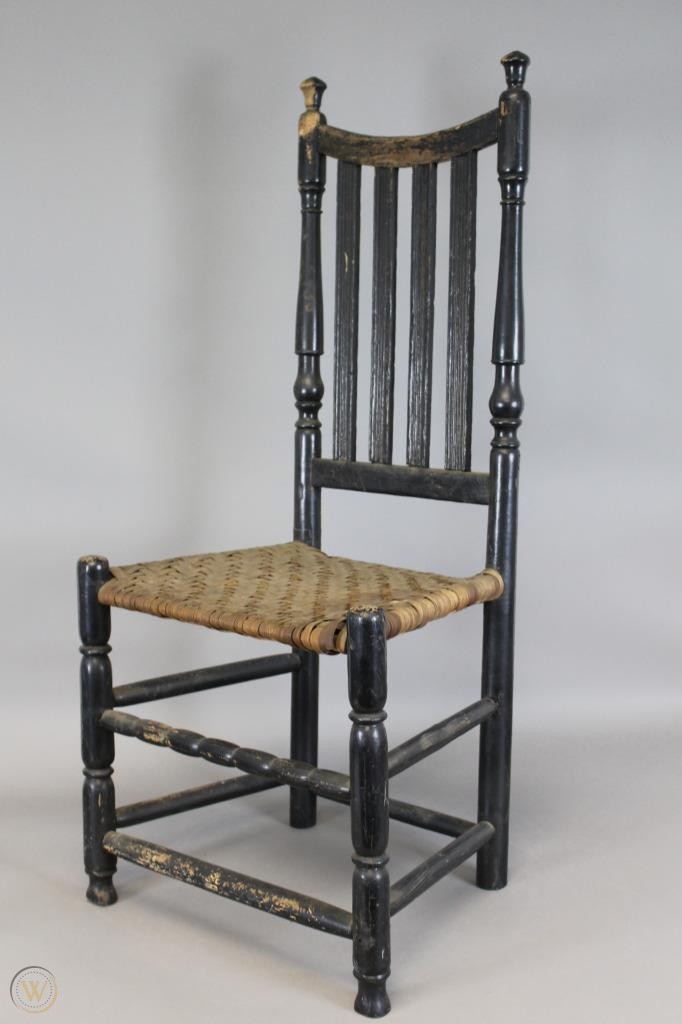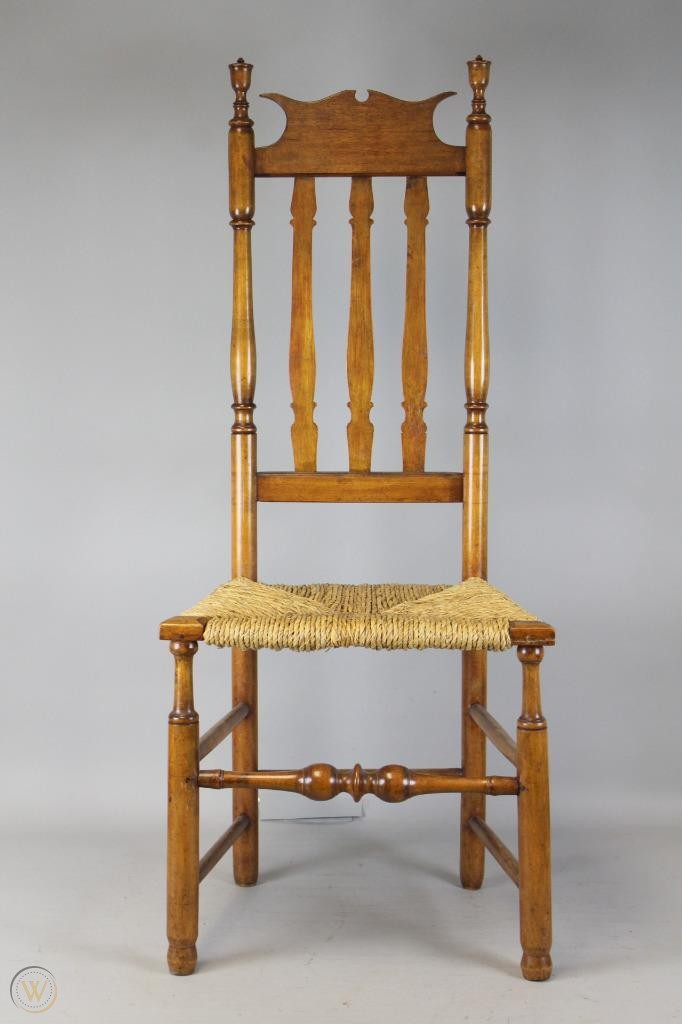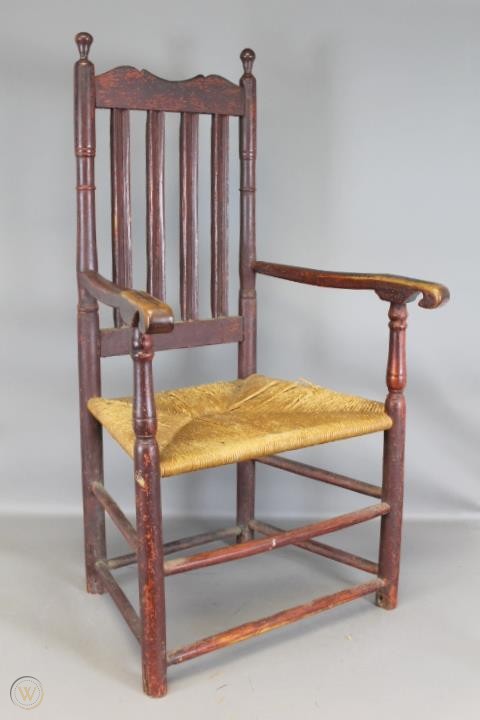
Have you ever walked into a thrift store and had to do a double-take upon discovering an item on your wish list? Recently, this very thing happened to me. While doing a happy dance inside, I nonchalantly approached the item to ensure no one noticed my excitement and snatched it before I could reach it. Then, while picking it up, I did another happy dance when I looked at the ten-dollar price tag. The item was a banister-back chair. Before you question my excitement for a single chair, let me explain what makes these chairs out of the ordinary.
SUCCESSFUL CHAIR DESIGN
Since the 17th century, European chairs were made with a gap between the seat and the back of the chair, with no ergonomic back support for the seated person. Although the inventor of the banister-back chair is uncertain, in 1715, British chair-makers began creating chairs with a solid central splat shaped like a classic banister or baluster. The design was derived from a traditional Chinese chair with a vertical back splat connecting the crest and seat rails.
Around the time the banister-back chair was introduced, French chair-makers designed a reverse-curved chair leg initially referred to as a claw or French leg and later called a cabriole leg. Soon, British chair-makers began including this leg style on banister-back chairs, resulting in one of the most successful chair designs of all time. By the 1720s, the splats on banister-back chairs took on a more classical profile. Between 1720 and 1750, the banister-back chair dominated British chair design.

During the early 18th century, American chair-makers began designing economical versions of imported British-made banister-back chairs. Most of the production took place in the mid-Atlantic states. These chairs were simplified William and Mary furniture styles, with less ornamentation on the slats, rails, and feet. Each also included four or five vertical slats instead of a central splat. The American style of banister-back chairs remained popular for nearly half a century.
DISTINCT FEATURES
Most American-made banister-back chairs are constructed with maple frames and twisted rush or splint woven seats. The seats sit low to the ground, typically 14 ½ inches from the floor, and are wider in the front. These chairs have high seat backs and include carved crest rails, decorative feet, and fanciful turnings on the stretchers, slats, and stiles. Some are made with arms, while others are without. The arms are usually curved downward in the back and include a carved knuckle detail at the end.
Banister-back chairs typically include decorative feet only on the front legs. The front and side stretchers are usually adorned in ornamental detail, while the back stretchers are plain. Most chairs are finished with paint, traditionally red, green, or black, but a few are finished in a reddish brown to simulate walnut. Some include applied moldings and trim or decoration painted in gilt.
STYLE VARIATIONS

Although American-made banister-back chairs have similar features, there are style variations that differentiate one from the other. Some front feet styles include buns, turnips, and duck feet, with the Spanish foot being the most common. The spindles, finials, stiles, and stretchers are found in numerous turning designs.
Yet, the most distinguishing feature is often the carved crest (top) rail. Chair-makers made several variations of the crest rail. Some of the more popular designs include the yoke-crest or yoke-back (which emulates the curve of an oxen yoke), heart and crown crest (a crown crest with a cut-out heart design), fishtail crest, tombstone crest, and foliate crest (carved with a leaflike motif).
AUTHENTICATING YOUR CHAIR
Some characteristics can help distinguish early banister-back chairs from later ones. The chair’s construction should feature scribe marks where the spindles were joined to the frame. The parts of the chair should also be connected with round peg joinery.

Early examples of banister-back chairs will show signs of use. Look for wear on the crest rail and finials from continual handling. The front stretcher should also show wear from years of feet rubbing and resting on it. If the chair still contains its original paint, the finish should be chippy and faded. Since it was handwoven, look for an inconsistent weave on the rush or splint seat. The bottom of a rush seat will also show a distinct seam where the natural rush leaves were snipped. However, most rush or splint seats are usually repaired or replaced since they only last twenty to thirty years. My chair’s original rush seat was at one time replaced with a fiber rush seat.
Another sign of age is how close the chair sits to the floor. Over time, chair legs wore down and were usually trimmed to keep them even with the ground. My banister-back chair’s seat sits approximately 2 ½ inches lower to the ground than a typical banister-back chair. Additionally, the classic decorative feet on the front legs are missing, indicating someone cut them off.
FLAWED BUT BEAUTIFUL
Although my banister-back chair may be flawed, its signs of repair and wear attest to how special it is. Its past owners valued it enough to repair it so it would last longer. The worn wood represents the hands that touched it time and time again—giving it a faded finish that is smooth to the touch. For those reasons and more, I am honored to proudly display it in my home and admire its beauty for years to come.
Karen Weiss is a freelance writer and enjoys decorating her home with vintage finds from her many collections. She also has an Etsy shop called SimplePatinaFinds.
WorthPoint—Discover. Value. Preserve.
The post Banister-Back Chairs—Out Of The Ordinary appeared first on WorthPoint.

